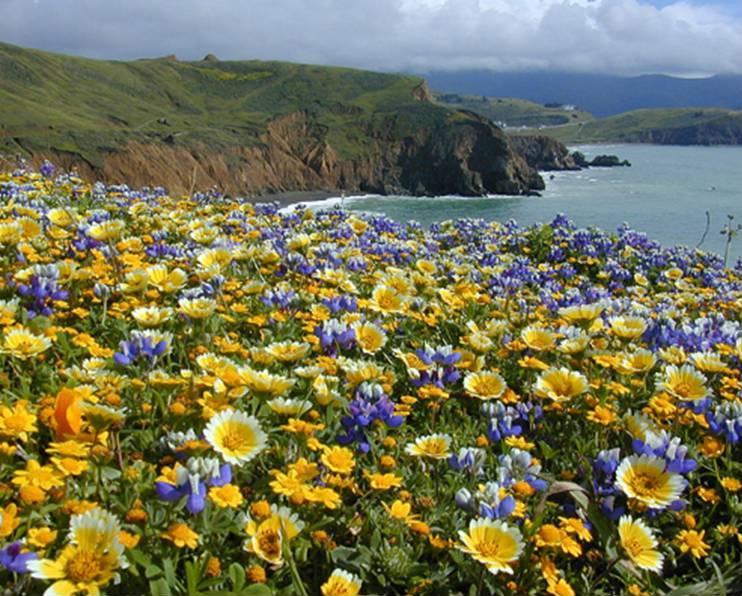Prairie:
Species

California’s coastal prairies are the most diverse of any grassland in North America (Stromberg, et al. 2001). During coastal prairie mapping efforts in Sonoma and Marin counties, botanists regularly found 30 to 70 species growing within 10m x 10m plots (CPEFS 2010).
These grasslands are home to an incredibly diverse flora including approximately 80 endemic species whose populations are found only in California’s coastal prairies (Ford and Hayes 2007). Most of these unique plants are annual and perennial forbs (non-woody broadleaf plants, including wildflowers). In fact, native wildflower species far outnumber grass species in coastal prairie grasslands.
Spaces between the bunch grasses are filled with annual wildflower seeds that germinate in the fall, grow slowly throughout the cold winter months until the spring when flower buds form and open from early spring through late summer. Even in “non-native” grasslands where there are few native grasses remaining, there is often an abundance of annual wildflowers, many of them native, that can be found growing and flowering under the waving culms of introduced grasses such as wild oats or rattlesnake grass.
Many animals including mammals, birds, insects, and reptiles depend on the resources available in coastal prairies for food, shelter, and nesting materials. Plant parts used as food and forage include leaves, stems, flowers, seeds and underground plant parts (bulbs, corms, rhizomes, roots, etc.).
Plant and Animal Species Accounts
What is a grassland-dependent species? Some species, called grassland specialists, spend their entire life within grasslands, completely dependent on the local conditions of grassland environments. To better appreciate the complexity of processes and interactions of coastal prairie communities, we focus on species that are grassland-obligates, a category that includes grassland specialists but also includes species that may not occupy grasslands for their entire life, but depend on resources provided by grassland habitats for some aspect of their survival.
On these pages, we provide descriptions of plants and animals that live in grasslands. We do not try to duplicate the efforts of other species database and field guides, but rather summarize information that is helpful for understanding how each species relies on grasslands for their reproduction and survival. In addition, we also provide some "Fun Facts" that will enhance appreciation of these amazing species.
Quick Links to Species Accounts: